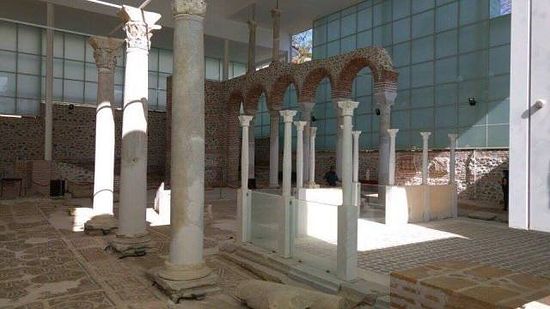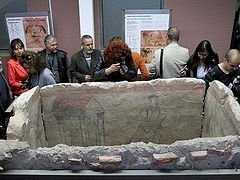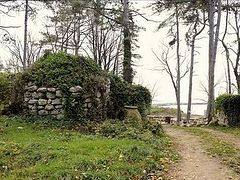Source: Archaeology in Bulgaria
April 24, 2016
 The long wait for the opening of the Early Christian Archaeological Park in Bulgaria’s Sandanski has paid off now that it is emerging as a major site for cultural tourism. Photo: Bulgarian Prime Minister’s Facebook Page
The long wait for the opening of the Early Christian Archaeological Park in Bulgaria’s Sandanski has paid off now that it is emerging as a major site for cultural tourism. Photo: Bulgarian Prime Minister’s Facebook Page
The Archaeological Park of Early Christian buildings from the Roman city Parthicopolis which was opened recently in the southwestern Bulgarian town of Sandanski in a long-anticipated and long-delayed event has met the expectations for emerging as a top cultural attraction, according to its manager.
“The interest for the Park with its entire Early Christian ensemble, and for our museum, has met our expectations because these are exciting archaeological sites of national importance, and it is known that Sandanski Municipality is one of the richest in Bulgaria in terms of archaeological heritage", Vladimir Petkov, Director of the Sandanski Museum of Archaeology, which also manages the Early Christian Park, has told BTA, some 20 days after the opening.
The Early Christian complex in Sandanski, which includes two Christian basilicas – the Bishop’s Basilica and Bishop John’s Basilica, a martyrium, and a holy well (a spring of holy water), also known as an “ayazmo", has been under restoration since 2013 under an EU funded project entitled “Sandanski – the Dawn of Early Christianity".
The project, which is supposed to provide a boost for cultural tourism in the town of Sandanski, a spa resort located near Bulgaria’s border with Greece, is worth BGN 6.1 million (app. EUR 3.1 million), of which Sandanski Municipality has contributed BGN 160,000 (app. EUR 82,000).
Sandanski Municipality expects that the Archaeological Park featuring excavated and restored buildings from the Late Antiquity / Late Roman and Early Byzantine period will become a major cultural tourism attraction in Southwest Bulgaria, a region that is also close to Northern Greece and the Republic of Macedonia.
The Archaeological Park in Sandanski features over 1,000 cultural and archaeological artifacts. These include the most interesting artifacts of the recent archaeological discoveries from the ancient city of Parthicopolis made as the local archaeologists were working on the further excavation and restoration of the Early Christian complex.
Petkov points out that after its opening both the Early Christian Archaeological Park and the renewed exhibition of the Sandanski Museum have been visited by a substantially growing number of tourists, including international travelers. He also notes that the Museum continues to develop its archaeological school for children.
“Visitors can get immersed into the incredible atmosphere and history of the Early Christian complex, view the exquisite finds which have been preserved and restored, and get to know the entire Early Christian ensemble with a tour guide," Petkov says.
He also emphasized that the Early Christian Archaeological Park is located in the downtown of Sandanski, a center for spa tourism, right next to the Sandanski Museum of Archaeology which itself has recently been revamped, and boasts a rich collection of ancient architectural fragments, coins, mosaics, marble sculptures, and ceramics.
Petkov mentions in particular the a large bronze cross for church procession from the 5th century AD which was discovered during in the excavations as part of the Early Christian Park project.
In August 2015, the archaeologists excavating the so called Bishop’s Basilica of the Ancient Roman and Early Byzantine city of Parthicopolis in Sandanski discovered the last fragment from a marble slab with a christogram, a Christian symbol consisting of a monogram of letters standing for the name of Jesus Christ.
In April 2015, the archaeologists in Sandanski found the hand of a huge Roman marble statue while excavating the Early Christian monuments.
An intriguing idea that the management of the Archaeological Park in Sandanski is considering is to reopen the restored Early Christian baptistery for baptism of Christians some 1,500 years after it was last in use.
With the successful completion of the Archaeological Park with EU funding, the Museum Director hopes that there will be opportunities for developing more EU funded projects in order to promote Sandanski’s cultural and historical heritage.



